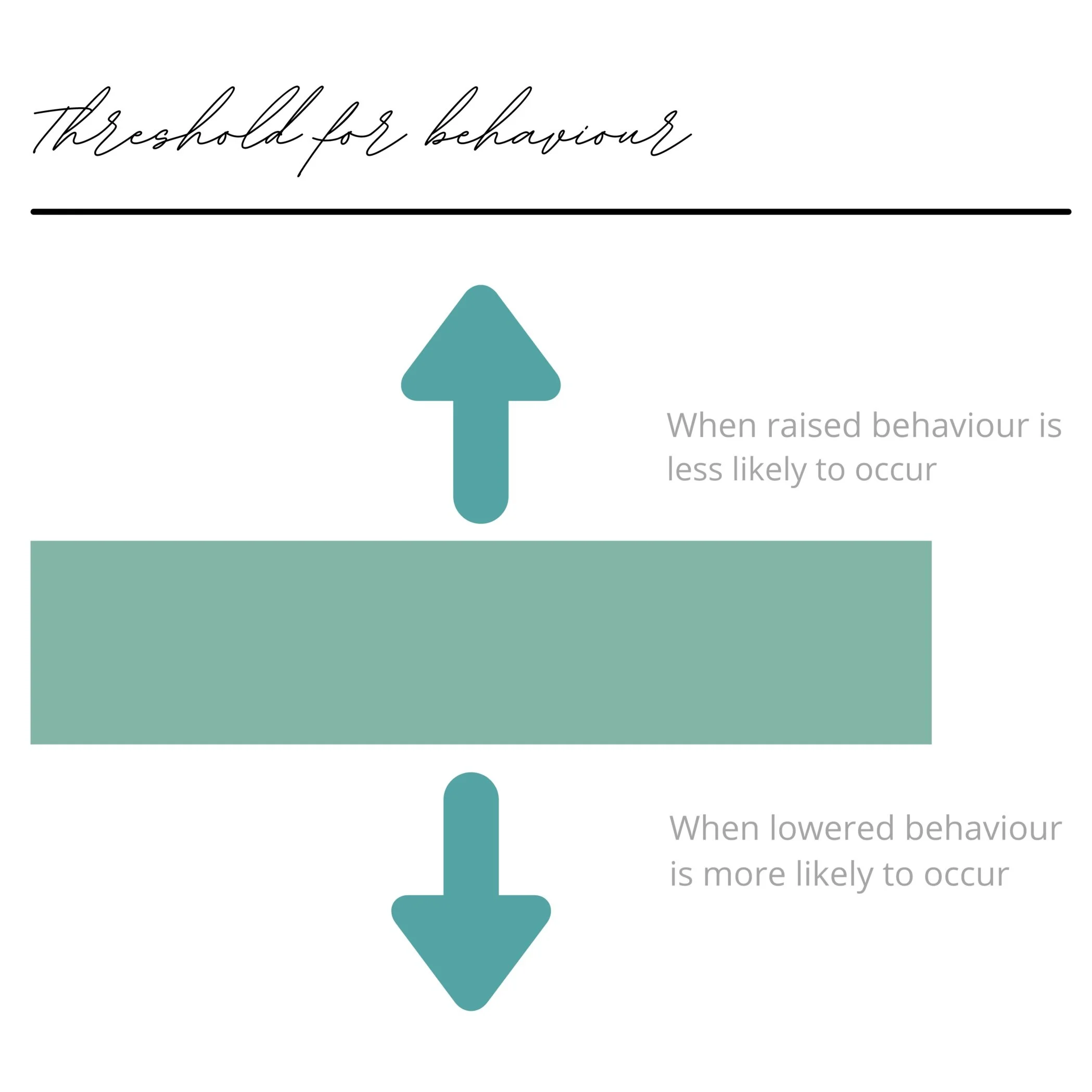What is behaviour?
The most commonly used definition of behaviour when referring to animals is;
“Behaviour is the way in which an animal acts, it is any observable movement.”
Behaviour can be both learned or inherited through genetics. Inherited behaviours may include acts such as herding or tracking, and can sometimes even be anxiety or aggression use. Behaviour as a whole is influenced by a combination of factors including;
Genetics
Environment
Current status
To be able to modify behaviour, we must completely understand why it occurs, as well as the animals perception of the situation. This will then lead to solutions as to how the behaviour can be altered in the most effective way. Each dog will have its own behavioural threshold. This can shift due to a range of factors including previous learning experiences, training, limitations, current status and immediate situation. When an animal's behavioural threshold is raised behaviour is less likely to occur, when it is lowered behaviour is more likely to occur. Behaviour can be both voluntary and involuntary - involuntary behaviour (reflexive behaviour) happens naturally, whereas an animal consciously makes the choice to engage in a voluntary behaviour. Voluntary behaviour has a goal, and is influenced by the consequences (result) it produces.
What are the ABC’s of behaviour?
There are three stages to each behaviour that is exhibited;
Antecedent stimulus
Behaviour
Consequence
The antecedent stimulus is a change in environmental stimuli. This causes behaviour, a physical response, to occur, and that behaviour causes consequence (result/no result). When we talk about consequences in animal training, it is important to remember this often means ‘outcome’ or ‘result’, and is not necessarily a negative one - like when your parents said when you were young “take the bins out or there will be a consequence”.

